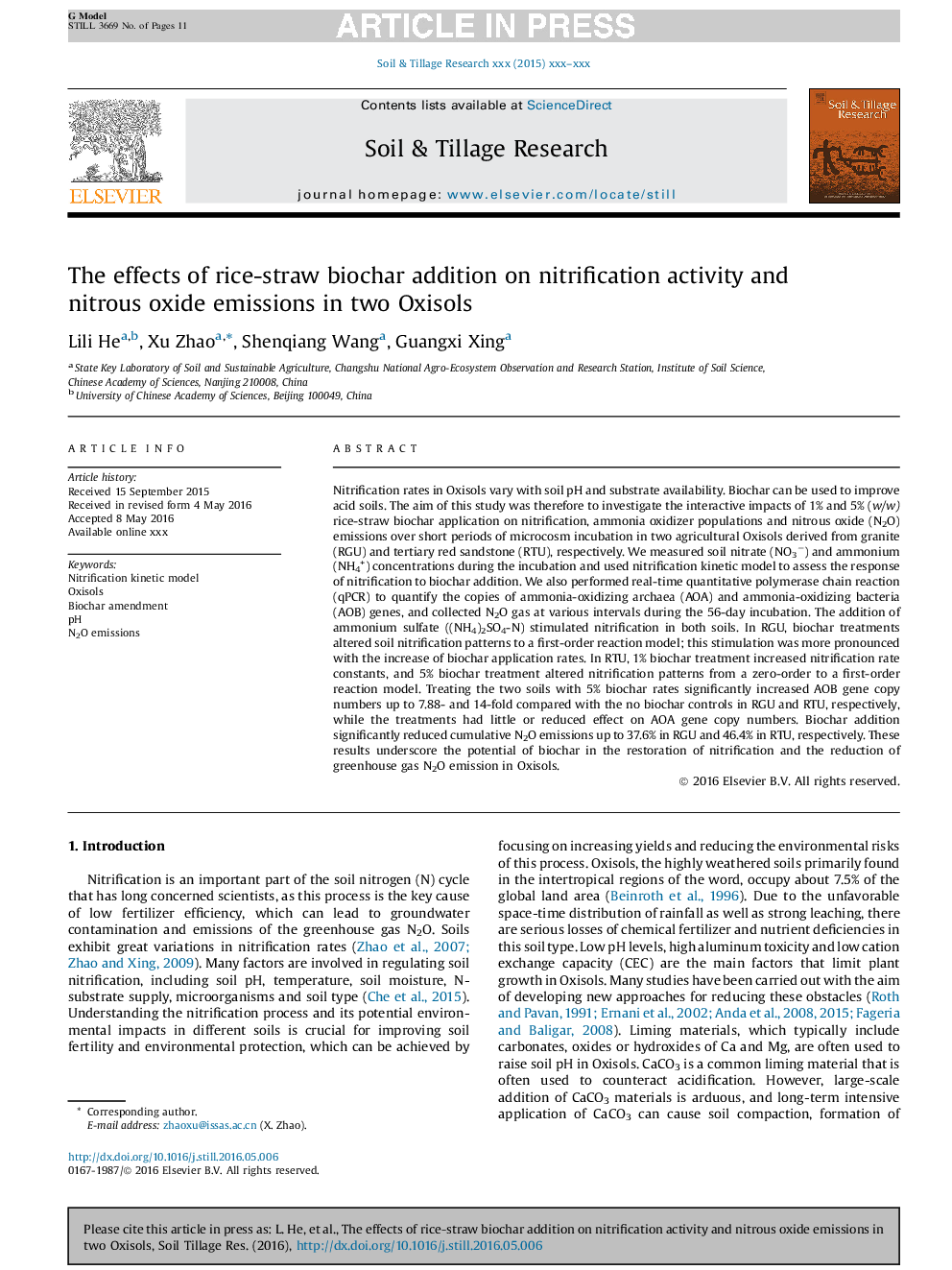| کد مقاله | کد نشریه | سال انتشار | مقاله انگلیسی | نسخه تمام متن |
|---|---|---|---|---|
| 6773384 | 513022 | 2016 | 11 صفحه PDF | دانلود رایگان |
عنوان انگلیسی مقاله ISI
The effects of rice-straw biochar addition on nitrification activity and nitrous oxide emissions in two Oxisols
ترجمه فارسی عنوان
اثرات افزودن زغال اخته برنج بر عملکرد نیتروژن و انتشار اکسید نیتروژن در دو اکسیسول
دانلود مقاله + سفارش ترجمه
دانلود مقاله ISI انگلیسی
رایگان برای ایرانیان
موضوعات مرتبط
مهندسی و علوم پایه
مهندسی انرژی
انرژی های تجدید پذیر، توسعه پایدار و محیط زیست
چکیده انگلیسی
Nitrification rates in Oxisols vary with soil pH and substrate availability. Biochar can be used to improve acid soils. The aim of this study was therefore to investigate the interactive impacts of 1% and 5% (w/w) rice-straw biochar application on nitrification, ammonia oxidizer populations and nitrous oxide (N2O) emissions over short periods of microcosm incubation in two agricultural Oxisols derived from granite (RGU) and tertiary red sandstone (RTU), respectively. We measured soil nitrate (NO3â) and ammonium (NH4+) concentrations during the incubation and used nitrification kinetic model to assess the response of nitrification to biochar addition. We also performed real-time quantitative polymerase chain reaction (qPCR) to quantify the copies of ammonia-oxidizing archaea (AOA) and ammonia-oxidizing bacteria (AOB) genes, and collected N2O gas at various intervals during the 56-day incubation. The addition of ammonium sulfate ((NH4)2SO4-N) stimulated nitrification in both soils. In RGU, biochar treatments altered soil nitrification patterns to a first-order reaction model; this stimulation was more pronounced with the increase of biochar application rates. In RTU, 1% biochar treatment increased nitrification rate constants, and 5% biochar treatment altered nitrification patterns from a zero-order to a first-order reaction model. Treating the two soils with 5% biochar rates significantly increased AOB gene copy numbers up to 7.88- and 14-fold compared with the no biochar controls in RGU and RTU, respectively, while the treatments had little or reduced effect on AOA gene copy numbers. Biochar addition significantly reduced cumulative N2O emissions up to 37.6% in RGU and 46.4% in RTU, respectively. These results underscore the potential of biochar in the restoration of nitrification and the reduction of greenhouse gas N2O emission in Oxisols.
ناشر
Database: Elsevier - ScienceDirect (ساینس دایرکت)
Journal: Soil and Tillage Research - Volume 164, December 2016, Pages 52-62
Journal: Soil and Tillage Research - Volume 164, December 2016, Pages 52-62
نویسندگان
Lili He, Xu Zhao, Shenqiang Wang, Guangxi Xing,
